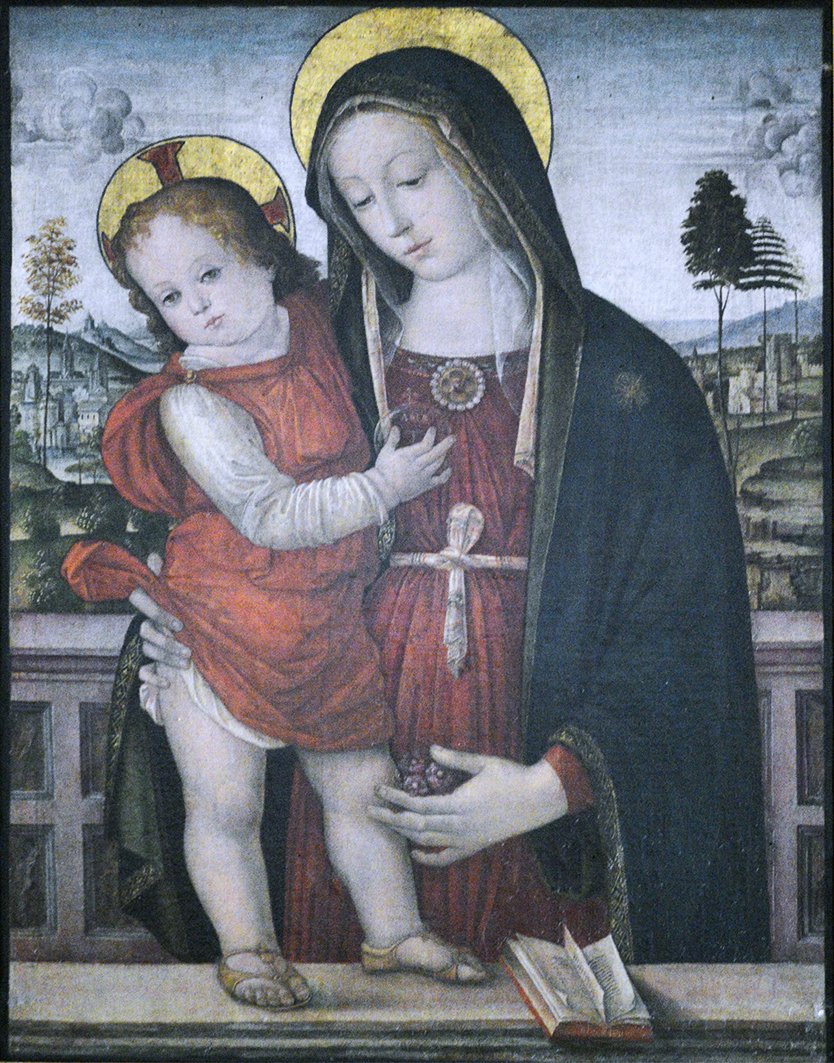
The Madonna and Child
fl.1481-d.1513
Linen on panel, 33 3/8 ins by 25 3/8 ins
Collection Details
Mrs Ross, Florence, from whom bought by Agnew, 1895, and sold to Alexander Henderson, later 1st Lord Faringdon. (The number 495 is painted on the back.)
Literature
R Fry, ‘The Umbrian Exhibition at the B.F.A.C.’, Burlington Magazine, xvi, 1910, p.268; V Gnoli, ‘La Pittura Umbra alla Mostra del Burlington Club’, Rassegna d’Arte Umbra, May 1910, pp. 48–9; F Todini, La Pittura Umbra, 1989, i, p.49, ii, pl.830.
Exhibition Details
BFAC, Pictures of the Umbrian School, 1910, No.32.
Related Picture
See below.
Background
Fry described the figures as ‘flaccid’ and observed that the picture ‘can scarcely lay claim to being more than an atelier piece’ (ie, of Pintoricchio). Gnoli also considered it a workshop production. Claude Phillips is quoted in the BFAC exhibition catalogue (from The Daily Telegraph, 7 December 1909) as regarding it as close to Pintoricchio. The type of composition, which derives from Verrocchio, was carried to Perugia and used on occasions by Pintoricchio and Fiorenzo di Lorenzo. A distinction between their work has not always met with unanimous agreement: eg, the Salting Virgin and Child, in the National Gallery (No.2483), now ascribed to Fiorenzo and of a similar composition to the Buscot Madonna.
An almost identical picture, but with a curtain background, is attributed to Fiorenzo by van Marle (Development of the Italian Schools of Painting, 1933, xiv, p.178, fig.115; idem, Vita Artistica, April 1927, p.76 repd). The Buscot painting is, however, closer to Pintoricchio than to the more firmly modelled style of Fiorenzo. In 1989, Todini (op cit) published the picture as a late work by Bartolommeo Caporali (d.1442), and lists a number of workshop replicas. Todini makes a plausible case for this attribution.
The unusual inscription Asia (? original) on the globe held by the Child may be a reference to the future evangelisation of part of the continent, following Paul’s journey to Ephesus, when ‘the entire population of Asia heard the word’. ‘Asia’ could, in the fifteenth century, signify either the Roman province of that name, embracing the western parts of the peninsula now known as Asia Minor, or the continent as a whole. In the New Testament, the former is intended.
The picture is damaged and has been considerably retouched. It appears that the original tempera painting has been largely repainted in oil. The frame, like those of Nos. 50 and 66, was made for the 1st Lord Faringdon.
The Trustees of the Faringdon Collection 25.
All rights reserved.
